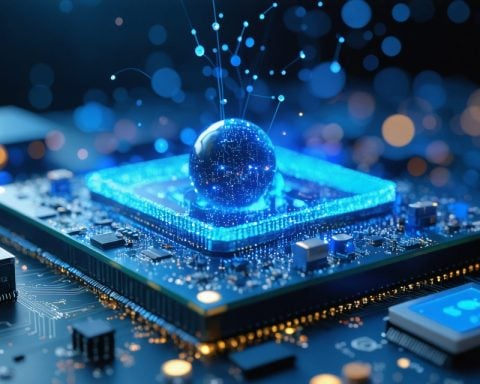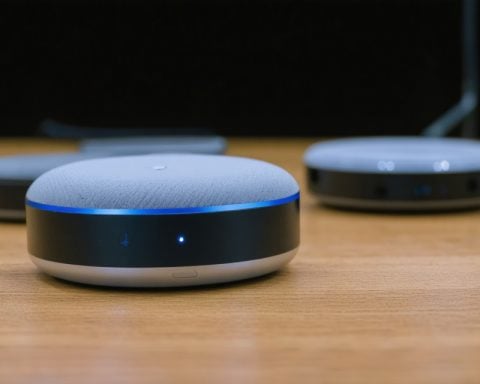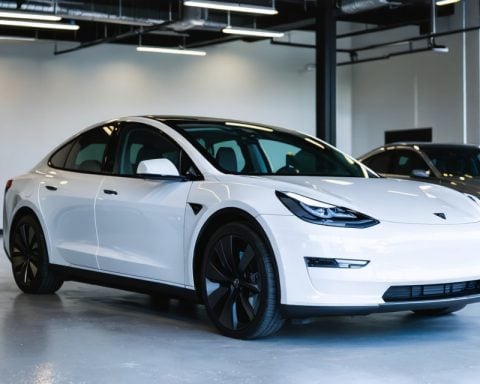- Intel faces a leadership vacuum following CEO Pat Gelsinger’s retirement in 2024, impacting its strategic direction.
- Significant investment in foundry operations, particularly the Intel 18A process, aims to reclaim market share from TSMC by 2026.
- Strategic partnerships with Microsoft and Amazon show promise, but missteps could have severe repercussions.
- The PC CPU market poses challenges, with Intel struggling in gaming but seeing success in the laptop sector with Arrow Lake chips.
- The upcoming Panther Lake series is expected to bolster Intel’s gains in mobile computing.
- In the server CPU space, Intel’s Granite Rapids seeks to recover market position by reducing prices, despite lower margins.
- Investor sentiment hinges on Intel’s execution and potential signs of recovery, with expectations of a comeback or further decline.
Once a titan in the semiconductor world, Intel faces turbulent times. The path forward is fraught with challenges, yet brimming with potential. After the abrupt retirement of CEO Pat Gelsinger in 2024, Intel’s leadership vacuum casts a shadow over its strategic direction.
The heart of Intel’s gamble lies in a colossal investment in foundry operations. With the Intel 18A process poised for primetime, the chip giant aims to claw back market share from TSMC. Winning contracts with industry behemoths like Microsoft and Amazon gives hope, but the stakes are colossal—missteps could spell trouble. More customers, more revenues, and this dream may morph into a dazzling reality. The moment of truth is near; in 2026, these investments must yield results.
Yet, not all is uncertain at Intel. The PC CPU segment stumbles, particularly in gaming, where rivals like AMD take the lead. Desktop chips falter, yet the scene brightens for laptops. Intel’s Arrow Lake chips, sleek and powerful, have wooed consumers with robust performance and stellar battery life, sparking optimism that Intel might regain its footing. Come the year’s end, the Panther Lake series may extend these gains further.
In server CPUs, Intel’s Granite Rapids seeks redemption. By aggressively slashing prices, Intel aims to regain ground, even at the expense of its margins. It’s a high-stakes gamble with the first Intel 18A server chips still a year away.
The clock ticks and change looms large. In a market that values innovation and agility, Intel’s journey in upcoming years may spell either resurgence or regression. With a stock price battered down, any glimmer of progress could rejuvenate investor confidence. Intel’s mission is perilous, yet a turnaround could spark soaring fortunes.
Intel’s Potential Turnaround: Can It Overcome Past Struggles?
How-To Steps & Life Hacks for Intel’s Strategies
Intel’s future hinges significantly on its ability to successfully execute its foundry operations and new product lines. Here’s how it can streamline its strategy:
1. Focus on Intel 18A Process: Dedication to the Intel 18A process is essential. Continuous improvement and adaptation in response to market trends and customer feedback will be crucial.
2. Diversify Customer Portfolio: By establishing partnerships beyond Microsoft and Amazon, Intel can minimize risks associated with reliance on a few clients.
3. Optimize Pricing Strategies: As seen in the server CPU sector with Granite Rapids, aggressive but strategic pricing can help regain market shares temporarily, allowing time to strengthen market position.
Real-World Use Cases of Intel Products
Intel’s chips play a critical role across various domains:
– PC and Laptop Markets: Intel’s Arrow Lake chips are well-regarded for their exceptional battery life and reliable performance, making them perfect for both business professionals and gaming enthusiasts.
– Server Market: The Granite Rapids series, by offering competitive pricing, is particularly suitable for startups and small enterprises looking for cost-effective yet powerful solutions.
Market Forecasts & Industry Trends
The semiconductor industry is volatile and competitive. Here are some trends and forecasts:
– Shift Towards Advanced Nodes: With TSMC and Samsung pushing the boundaries, Intel’s commitment to advanced processes like Intel 18A is imperative for staying competitive.
– Growing Foundry Business: A successful foundry segment could see Intel capturing a significant portion of the market from leaders like TSMC and Samsung within the next five years.
Reviews & Comparisons
Intel vs. Competitors
– AMD: AMD continues to lead in gaming and desktop CPU sectors, while Intel has regained some ground in laptops due to the appealing features of Arrow Lake chips.
– TSMC: As a dominant foundry service provider, TSMC currently surpasses Intel in market share. Intel’s success in this area will require delivering superior performance and securing major contracts.
Controversies & Limitations
– CEO Transition: The recent retirement of CEO Pat Gelsinger adds uncertainty, and any misstep in leadership could harm strategic execution.
– Profit Margins Pressure: Intel’s aggressive pricing to regain server market share may harm its short-term profit margins, necessitating careful financial balancing.
Features, Specs & Pricing
– Arrow Lake Series: Known for adaptability and excellent battery life.
– Granite Rapids CPUs: Priced competitively to attract diverse customer bases.
Security & Sustainability
Intel remains committed to robust security measures to protect against cyber threats, an essential concern for all modern chip manufacturers. Sustainability initiatives focus on reducing environmental impact through efficient facilities and production methods.
Insights & Predictions
As Intel aims for a comeback, success in foundry operations, leadership stabilization, and competitive pricing will be crucial. A successful Intel 18A process could pivot Intel back to the forefront of the semiconductor industry.
Pros & Cons Overview
Pros
– Advanced fabrication processes like Intel 18A.
– Strong partnerships with tech giants.
– Regained momentum in the laptop sector.
Cons
– Leadership vacuum post-2024.
– Fierce competition from AMD and TSMC.
– Potential short-term financial instability due to pricing strategies.
Actionable Recommendations
– Investors might consider Intel stock for its long-term potential provided there’s notable progress in the foundry sector.
– Consumers should consider Intel laptops for efficient performance and battery life.
For more information on Intel’s journey and offerings, visit their official website: Intel.
By concentrating on process innovation, strategic partnerships, and overcoming leadership hurdles, Intel could once again rise to prominence in the tech industry.













